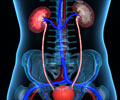A scientist of Indian origin and his team at Washington University School of Medicine in St. Louis have found a way to make tumour cells easier to destroy.
Researchers at the Washington University School of Medicine in St. Louis led by an Indian origin scientist have found a way to render tumor cells vulnerable to destruction.
They have found that tumours have a unique vulnerability that can be exploited to make them more sensitive to heat and radiation.During the study, senior author Tej K. Pandita, Ph.D., associate professor of radiation oncology and of genetics, a researcher with the Siteman Cancer Center at Washington University School of Medicine and Barnes-Jewish Hospital and his team discovered that tumours have a built-in mechanism that protects them from heat (hyperthermia) damage and most likely decreases the benefit of hyperthermia and radiation as a combined therapy.
Now, researchers have shown that by interfering with that protection, tumour cells grown in culture can be made more sensitive to hyperthermia-enhanced radiation therapy.
"Past research has shown that hyperthermia is one of the most potent ways to increase cell-killing by radiation," he said.
"But now we've found that heat also enhances the activity of an enzyme called telomerase in cancer cells. Telomerase helps protect the cells from stress-induced damage and allows some of them to survive. We used compounds that inhibit telomerase and showed that cancer cells then become easier to destroy with hyperthermia and radiation used in combination," he added.
Telomerase repairs the ends of chromosomes by maintaining stability of specialized cellular structures called telomeres after cells divide. Without telomerase the number of cell divisions is limited.
Advertisement
The new study showed that moderately turning up the heat also turns up the activity of telomerase in tumour cells.
Advertisement
Because nearly all cancers have telomerase, drugs that turn off its activity could be useful against many cancers.
The researchers tested three compounds, and one, GRN163L, more strongly inhibited telomerase than the others.
Many scientists are studying GRN163L as an anticancer therapeutic, and it recently received clearance by the U.S. Food and Drug Administration to enter human phase I/II clinical testing in chronic lymphocytic leukemia.
In some preliminary studies, GRN163L has been shown to be additive when used in combination with existing cancer drugs or radiation.
Next, the researchers will test the effect of GRN163L on tumours in mice to see if it will enhance the cell-killing effect of hyperthermia and radiation.
They are also working to develop chemicals that have heat-like effects to bypass the need to supply a physical heat source to tissue.
The study is published in the May 1, 2008 issue of Cancer Research.
Source-ANI
RAS/L







